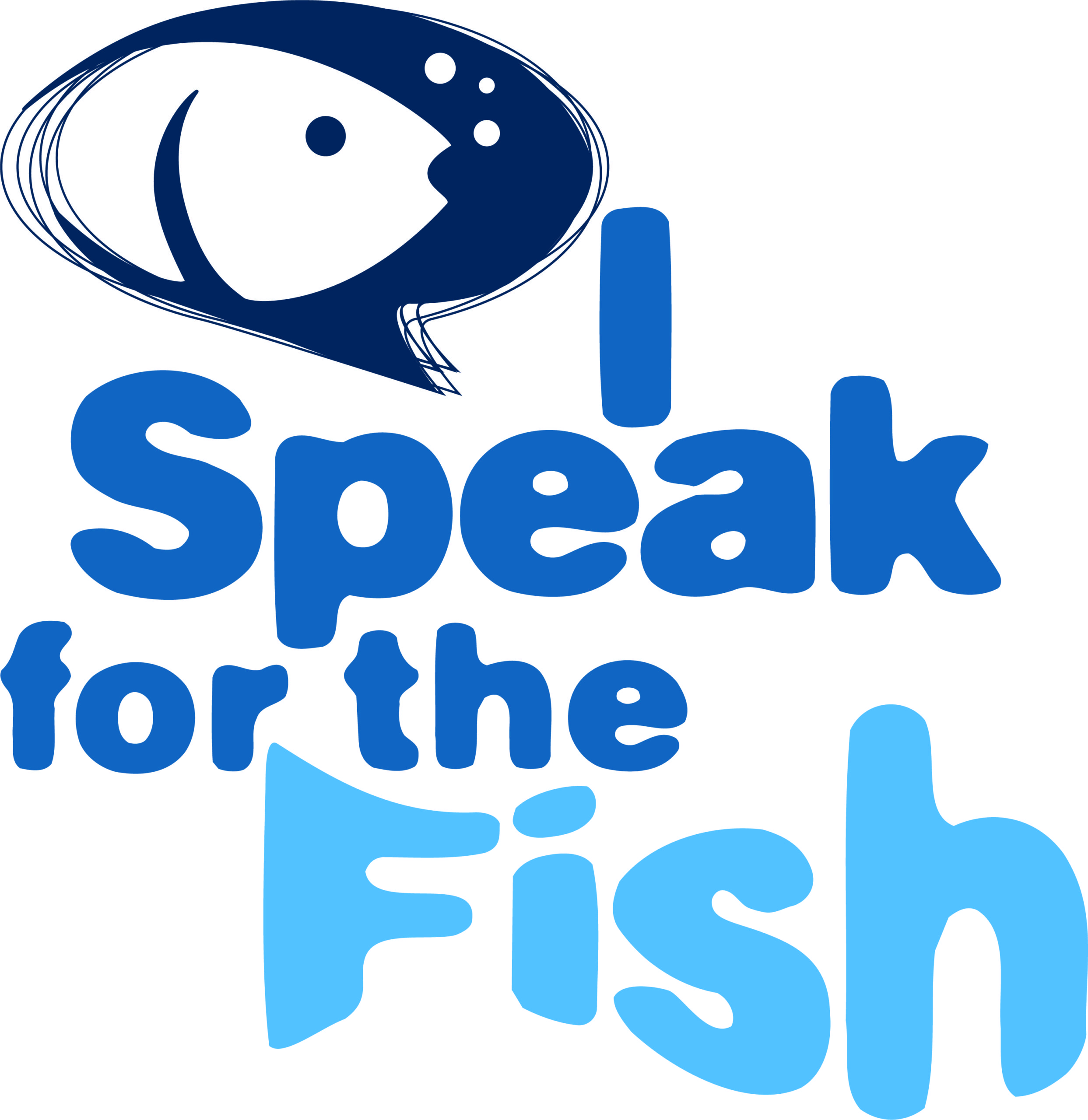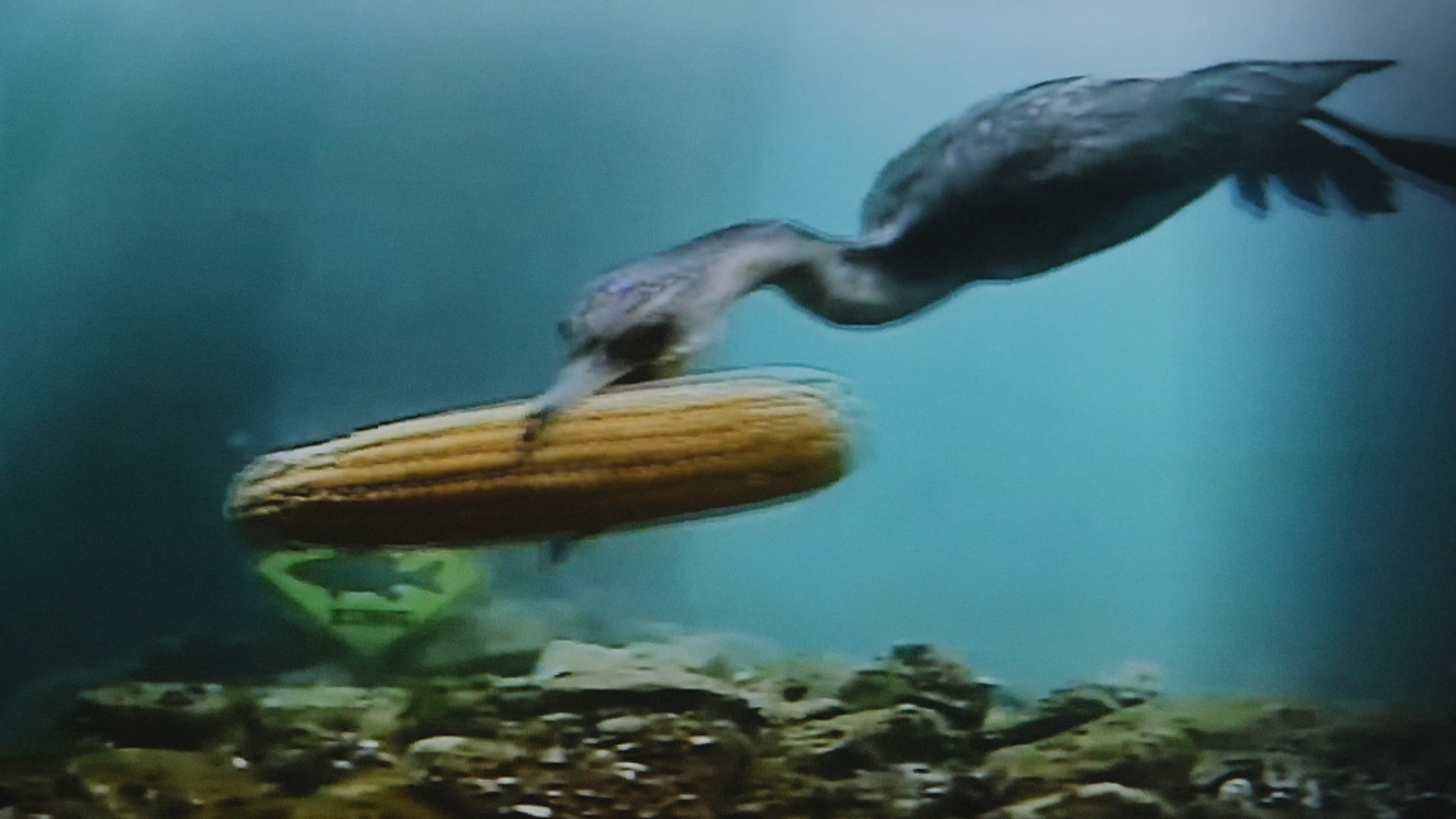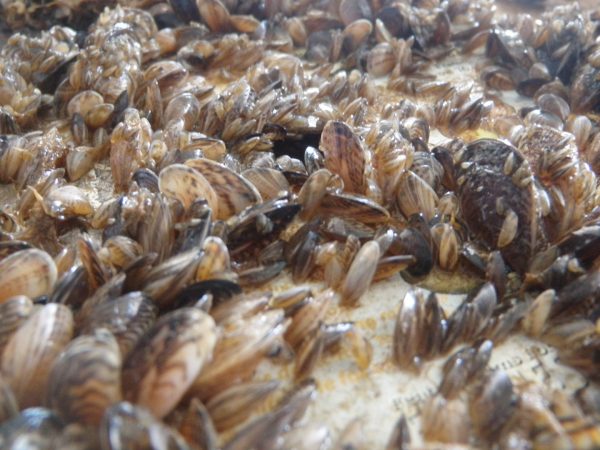
 I Speak for the Fish is a monthly column written by Great Lakes Now Contributor Kathy Johnson, coming out the third Monday of each month. Publishing the author’s views and assertions does not represent endorsement by Great Lakes Now or Detroit Public Television. Check out her previous columns.
I Speak for the Fish is a monthly column written by Great Lakes Now Contributor Kathy Johnson, coming out the third Monday of each month. Publishing the author’s views and assertions does not represent endorsement by Great Lakes Now or Detroit Public Television. Check out her previous columns.
Its velveteen lips brushed across my palm with the light tickly-ness of a feather duster.
River water swirled between my fingers as the big fish slurped up the pile of bright yellow kernels in my palm.
It backed away as soon as the corn was gone.
I gave a quick thumbs-up to my husband as I scrambled to restock my hand.
We were visiting a feeding station established by one of our dive buddies. Feeding stations are created by offering animals easily acquired food at a set location.
Consistency is key.
Each time we visit our livestream camera for housekeeping duties, we smash up some zebra and quagga mussels before leaving. Now, the redhorse suckers eagerly anticipate our departure so they can begin feasting.
When it comes to feeding wild animals there are many ethical considerations that should be taken into account. This includes an assessment of the potential risks which could result from the learned behavior.
Situational circumstances also factor heavily into the humans-feeding-wild-animals equation.
A bird feeder is an example of a beneficial feeding station. Filling a feeder with sunflower seeds or hanging a bag of suet in your backyard is a good thing to do for birds.
In contrast, offering a happy meal to a brown bear in Yellowstone National Park is a terrible idea. Not only is it unhealthy for the bear but it sets up a potentially dangerous encounter with the next unsuspecting campervan full of tourists.
Thankfully, our fish feeding efforts were more in line with filling a birdfeeder than fueling dangerous human interactions.
There was no risk of the carp turning rogue.
Fred’s place
Fred’s feeding station was a shallow water site with a super easy entry and exit. He had been dealing with some health issues and his daily dive with the fish had become an important part of his therapy.
A couple dozen yellow perch, a small school of minnows, and a few horny headed chubs were regular visitors to his station. He looked forward to seeing all of them as much as they looked forward to his arrival.
One day a large carp appeared. Drawn in by the feeding activity it was disinterested in the nightcrawlers and cocktail shrimp the other fish were enjoying.
Common carp have no teeth in their mouths. They have a couple of molar type teeth near the top of their throat that helps them mash and swallow the aquatic plants and algae that make up the bulk of their diet.
Their preference for water vegetables might explain why they like sweet corn so much.

(Photo Credit: Greg Lashbrook/PolkaDot Perch)
Corn is a common bait used by fishermen to catch carp which is why Fred decided to give it a try. The first time he dumped a can of organic sweet corn on the river bottom, the carp gobbled it all up.
Now she’s a regular at Fred’s diner.
I took it a step further during my visit.
Rather than dumping the corn directly on the bottom, I extended my arm, rested my hand on the sandy bottom then filled my palm with kernels.
The carp circled me. She was clearly interested. She eyed the golden nuggets in my palm but maintained a safe 3-foot distance.
I stretched my arm out until it felt like my shoulder lost contact with the socket. Thankfully, it was enough.
When she came in to feed she barely touched my hand. She didn’t need to. The suction from her mouth was as powerful as a Dyson vacuum. I felt a swish and swirl of water and all the corn was gone.
Hindsight fail
Common carp were the first invasive species of fish in North America.
Early immigrants were surprised to discover that there were no carp in North America. Carp had been a significant food source, garden element, and symbol of strength and courage in Asia for over 4,000 years, and similarly esteemed in Europe for nearly 2,000.
Carp have never been well regarded in the Great Lakes but some people would pay a small fortune to acquire one.
Koi, which are just a fancy type of common carp, are a prized pond fish.
They are selectively bred for color, with interesting patterns being the most desirable. Many routinely sell for hundreds of thousands of dollars with the most expensive on record going for $1.8 million.
At nearly two million dollars, Koi aficionados have elevated carp to second place on the list of most expensive fish in the world.
The historically lucrative global carp trade contributed to the U.S government’s decision to introduce the species here in the late 1800s.
In 1879, the first common carp were “liberated” in Ohio waters. Referring to a stocking program as liberating the fish sounds like a modern PR ploy but that is the term they used at the time, as noted by Milton Trautman in his classic tome The Fishes of Ohio.
Most of the carp were released in private ponds where many were able to gain access to natural waterways. Others escaped during flooding events.
If that has a familiar ring it’s because the exact same thing has just happened with the bighead, silver, black and grass carp that are currently threatening the Great Lakes.
Commonly referred to as invasive Asian carp, these fish were intentionally stocked in fishponds and similarly escaped or were flushed into natural rivers by flood waters.
Stocking of common carp in Ohio only lasted seven years from 1879 to 1886.
In 1899, just 20 years after the first common carp were stocked in Ohio waters 3.6 million were taken from Lake Erie alone.
Wherever the common carp was introduced, they wreaked havoc by destroying large amounts of aquatic vegetation which was essential habitat for many native species.
In the end, Trautman notes that after introducing the common carp, the federal government turned around and spent far more money attempting (unsuccessfully) to eliminate them.
This should have acted as a cautionary tale to prevent similar ill-advised introductions from ever happening again.
Sadly, it didn’t.
Fish farms in the Southern U.S. were allowed to import and plant these invasive carp species in close proximity to the Mississippi which is notorious for flooding.
Now, those fish are threatening to negatively impact a large portion of North America’s freshwater systems.
The corn thief
Sweet corn is a major crop in Michigan and a favorite late summer treat for residents and visitors alike. So, we were not surprised to see a shucked ear of corn swirling in an eddy behind a large shipwreck.
However, we were pleasantly surprised to see a 3-foot carp trying to eat the corn.
We watched in amusement as the ear of corn spun like a spindle on a lathe. Each pucker of the carp’s lips on the cob only resulted in the ear spinning faster.
The carp was clearly not getting any kernels but that did not stop it from trying.
Fast forward ten years and we thought maybe if we placed an ear of corn in front of our livestream camera a carp would stop for a visit.
We had barely pulled our dive flag from the water when a cormorant appeared on the livestream heading straight for the ear.
We watched in disbelief as the diving bird grabbed the ear in its bill and swam away with it.

(Photo Credit: Greg Lashbrook/PolkaDot Perch)
Thank goodness for the livestream or else we would have assumed the ear just got blown downstream by the current.
Never in a sturgeon’s lifetime would we have believed a bird would dive down to the river bottom to steal an ear of corn from a carp.
Catch more news at Great Lakes Now:
I Speak for the Fish: Bloomin’ jellies in Lake Huron
I Speak for the Fish: Mesmerized by minnows
Featured image: (Photo Credit: Greg Lashbrook/PolkaDot Perch)
1 Comment
-
Outstanding overview , we love eating carp and we pay high prices for them unfortunately very few grocers carry carp , magnificent fish , one of my favorite for eating as well




